[box]
Table Of Content
- Importance of your lower back
- Is it Common?
- Common Causes
- Exercises
- Can pain go on its own?
- Running shoes and LBP
- Activity After Pain
- Steps to take before returning
[/box]
It is a beautiful morning today. Sun is rising up with its soft, refreshing light energizing your whole body. You are so enthusiastically ready on the track for running. Now you start with a little jog, breathing deep and inhaling the fresh morning breeze, and loving this morning weather.

In between, you start feeling a dull ache on your lower back that bitter the taste of whole of your momentum. You ignore it and keep jogging. And now you are running properly. You feel that ache two to three more times while running but you ignored and ended up your session after achieving your targeted lapse.
In the same way, the next day comes and you continue with that flow. Now think about it by keep doing like this, towards what condition you are leading your body!
Why Can You Feel Lower Back Pain While Running
As a repetitive activity, running involves back-to-back stress over your whole body; particularly on all vital joints and major groups of muscles.
It is a sort of activity that keeps transferring the ground reaction power from the feet to straight up through the lower back and vertebrae, simultaneously bearing the weight of the whole upper body.
Sometimes when you are hyper-motivated, you don’t look at the watch and lapse and go for longer sessions. It obviously sounds efficient but this can worsen the negligible lower backache into a terrible pain throughout your days and nights. And if importance is not given to this pain in earlier stages and keeps continuing the athletic activities, this can also trigger other musculoskeletal disorders and can lead to the additional types of pain, bringing surrounding joints and muscle deformities altogether..
Your Lower Back Is Important!
The lower back which is known as the lumbar spine in medical terms is the third spine of our vertebrae i.e. backbone.
It carries and supports the whole weight of our upper body (head, arms, and trunk) that weighs 75% of our total body weight and transfers it to the hip joints and so on to the lower extremity joints and muscles.
It provides mobility for performing daily living routine movements such as bending and twisting.
Amongst the strongest muscles of our body are present in the lower back which flexes and rotates the hips while walking, as well as provides complete support to the spinal column.
Nerves in the lower back bring the sensory affect from the pelvis, legs, and feet muscles to the brain, and supply the most primary motor commands back to the lower limb.
All in all, it is a remarkably well-engineered structure by nature that provides immense support, strength, and flexibility. But despite it, this complex structure is very susceptible to injury and pain.
Is Lower Back Pain Common Worldwide?
According to a recent study by the Annals of Rheumatic Diseases, one in ten people are afflicted with lower back pain around the world, making it the world’s leading cause of disability.
Another research says, there are more than 80% of people will experience low back pain at some point in their lives. It is the second most common cause of disability in the United States (Srini Pillay, MD, 2016).
Four out of five people experience back pain at some point in their lifetime (Cleveland, 2021). While some individuals are more prone to chronic and acute back injuries because of their lifestyle.
How Common is Lower back pain in Runners?
Athletes are at greater risk for lower back injuries as a result of their regular physical activity.
It is not only about running. Whether it is basketball, football, soccer, ice skating, or tennis, in all cases the spine is always subjected to pretty much stress, twisting and turning pressure absorption, and even bodily impact on it.
This strenuous activity puts a strain on your back and can injure even the best and fittest athletes. Even though all exercises involve the entire spine, according to research published in 2020 by the University of Maryland Medical Center, it is estimated that 5-10% of all sports injuries are associated specifically with the lumbar (lower back) spine.
5 Common Causes Of Lower Back Pain
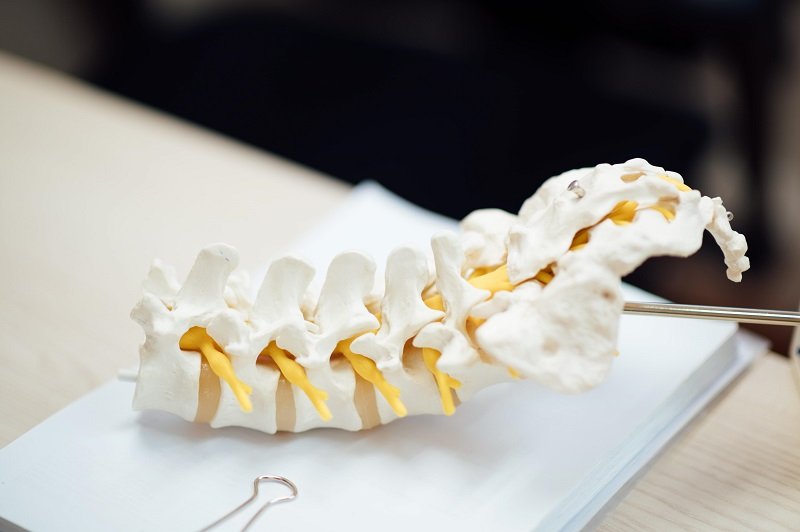
There are many causes to discuss of lower back pain but you will be reading here some of the commonest medical reasons which actually cause the lower back pain.
1. Back Strains and Sprains:
‘Musculoligamentous injury’ is a medical term that indicates a Back sprain and strain condition. It is the most common sports injury caused by injury to soft tissues around the spine. It is due to the overstretching of soft tissues around the spine which can include muscles, tendons, ligaments, and nerves.
If you try to lift something beyond your capabilities, you may strain your back and experience severe discomfort. If your job or hobbies often require you to lift and bend, or if you often do excessive weight training in the gym without protocols, such repetitive stress on your lower back can trigger painful muscle spasms.
2. Obesity
Not only in developing higher risks of a variety of serious health conditions, such as diabetes, hypertension, heart diseases, and even cancer, but obesity also contributes to lower back pain occurrence.
In addition to supporting the body and influencing movement, our lower back also has a normal spine curve that is most effective when it is in a neutral position.
When the person is obese, any extra weight in a person’s midsection can shift their pelvis forward, forcing their lower back spine into an excessive curve inward, which puts abnormal pressure on their back muscles. Here the lower back pain is warmly welcomed.
A recent article in the American Journal of Epidemiology assessed that lower back pain was directly related to an increased body mass index (BMI). It says that people within a normal weight range were at low risk of lower back pain, overweight individuals were at moderate risk, and those who were obese were at the highest risk.
3. Disc Rupture or Bulge:
The vertebrae of your spine are separated by cushions of strong connective tissue called discs. These rubbery discs which are amazing shock-absorbers, allow the spine to flex and absorb forces on the spine when you twist, bend, or lift any weight.
If the disc material begins to bulge or rupture, it can place pressure on a nearby nerve, resulting in acute pain that can result in severe lower back pain that can further radiate to your neck too.
4. Osteoarthritis:
In this condition, the protective cartilage that comforts and provides cushioning at the ends of bones starts to degenerate which affects the lower back severely.
There is a possibility that spinal arthritis will result in a condition called “spinal stenosis”. This is an abnormal narrowing of the spinal canal that causes painful pressure on the spinal cord or nerve roots.
5. Spondylolysis
There aren’t always symptoms associated with spondylolysis, but chronic low back pain is usually the most prominent symptom that occurs. It is a stress fracture in a thin bone segment joining two vertebrae, known as the pars interarticularis. It is the most likely area to be affected by repetitive stress. According to research in 2020 at Johns Hopkins University’s School of Medicine, this condition is fairly common and is found in one out of every 20 people.
If it is determined that you are suffering from a true stress fracture from athletic activity, the spine specialist may place you in a back brace 24 hours a day for several months. The brace will be gradually removed when you are ready to return to full activity. Surgery is rarely considered in such cases.
Lower Back Pain When Running Overweight
[box]
When you are overweight, every step you take puts extra strain on your lower back. The added weight makes your back muscles work harder to keep you upright and puts pressure on your spine. Over time, this can lead to lower back pain when running.
If you are carrying extra weight, the best way to reduce your risk of lower back pain is to lose weight. Even a small amount of weight loss can make a big difference. Try to slowly lose weight through a combination of diet and exercise.
Cutting calories and increasing your activity level will help you lose weight. But, you may also need to change the types of foods you eat. For example, eating more fruits, vegetables, and whole grains can help you lose weight and improve your overall health.
In addition to diet and exercise, there are other things you can do to protect your back. When running, be sure to wear shoes that provide good support. Avoid running on hard surfaces, such as concrete. If possible, run on softer surfaces, such as grass or dirt. (see best running shoes for concrete)
Strengthening your back muscles can also help to prevent lower back pain. Regularly doing exercises that target your back can help to keep your muscles strong and healthy.
If you are overweight and have lower back pain when running, there are things you can do to help ease your pain. Losing weight and changing your diet can help reduce your risk of further pain. In addition, strengthening your back muscles and being mindful of your running surface can help you keep your back healthy and pain-free.
[/box]
Lower Back Pain In Runners: Causes And Management

Here you will come to know about some of the most possible reasons why can a runner be suffering from lower back pain and how it can be managed smartly.
Slouched Sitting
Incorrect sitting posture is the biggest risk factor of lower back pain for anyone who sits prolongs either working in the office over a computer database, or students attending long duration classes at school, anyone is likely to have LBP.
It is also common in professional athletic runners because they love to travel to different destinations for races. Slouched sitting causes excessive strain on lower back (lumbar) discs.
Furthermore, it leads to tight hamstrings and hip flexors as well as inhibits gluteal muscle function. Just imagine all these risk factors with 30 miles of running and a long car ride! BOOM!
Solution: 1 – Less Sitting, Less LBP Chances:
In order to avoid lower back pain, you should limit your sitting time. Change your body position and it is best to take a walk after 25 minutes of continuous sitting.
If you are unable to walk then take a move in every twenty minutes or every hour. Frequent movement can help to avoid lower back pain. Avoid prolonged sitting before or directly after a long run or race.
Solution: 2 – Sit like a Real Athlete:
Make it possible that whenever you are sitting; keep your knees below your hip’s height to maintain a natural hip curve. This looks smart and attractive with a definite healthy posture for your lower back.
Weakness Of Core Muscles.
If the muscles around your lower back are weak, the body relies on passive structures such as ligaments (tissues that connect the bones) and the intervertebral discs between the backbones to stabilize.
This actually triggers lumbar pain. Research has shown that general exercises can support chronic lower back pain. So specifically focusing on the strengthening exercises of core muscles may provide some additional benefits (Mariano Kopasakis, DPT, SCS, 2020)
Exercises For Strengthening Lower Back
(Kopasakis, 2020)
1. Plank:
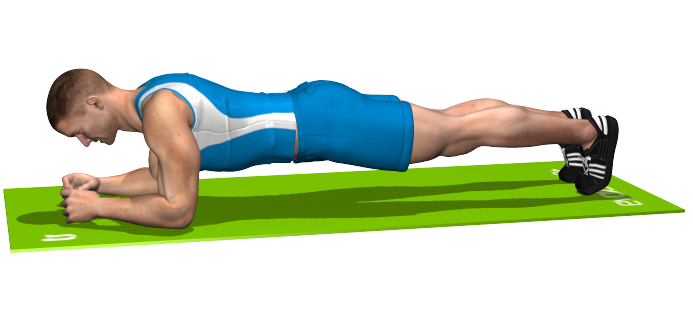
Make yourself kneel on all four limbs.
Pull your stomach and place your feet behind until your feet are straight. Place your hands under your shoulders and straighten your neck. Keep your stomach and legs firm and avoid sagging hips.
Hold for 30 seconds and breathe. You can change this pose by lowering your knees.
2. Bird Dog:
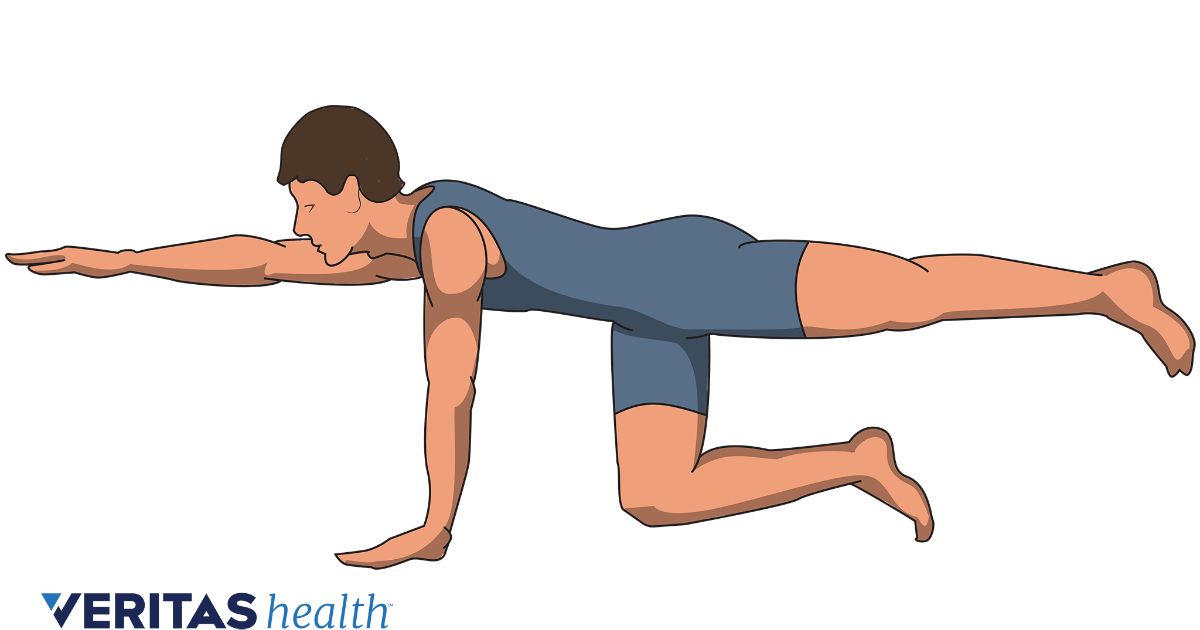
Kneel on all four limbs. Extend one arm forward, pull your abdomen and extend the other leg back. Maintain the posture for one or two seconds and then repeat on the other side, respectively.
3. Bridge Exercise
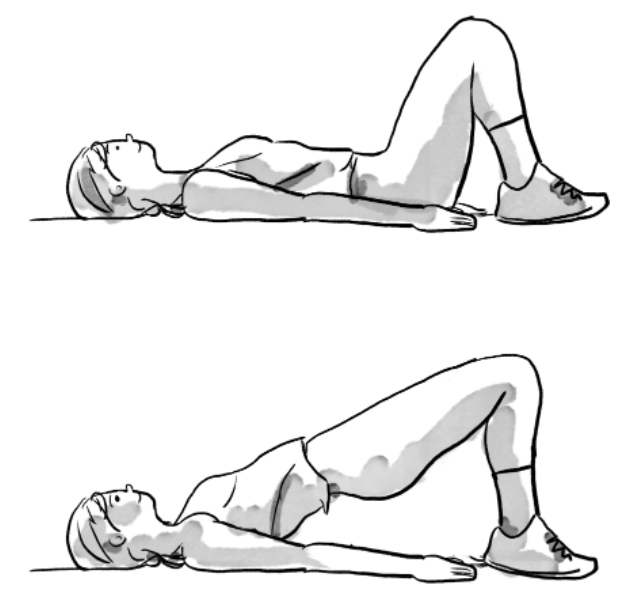
Bent your knees at 90 degrees.
Your feet should be flat on the ground. You should lift your bottom off the ground in a bridge position by engaging the deep core muscles. Maintain the natural curve in your lower spine rather than forcing your belly up by arching your back.
Hold in this position for at least 10-20 seconds or as easy as possible for you. Then return to the lying position. Do this for a minimum of 10 repetitions in 3 sets.
Can Lower back pain go on its own?
Back pain can often be treated without major disruption to a person’s life, but athletes often hesitate to seek medical help.
Many of them reject or minimize complaints in fear of certain consequences: For example, they need to reduce their activity in order to recover, they can lose their position, can be removed from their team, they may be unable to participate in the competition, or may result in disappointing their team.
Others are afraid that they may lose value to the team. Some athletes just don’t want to do the hassle of seeing a doctor about their pain. They believe it will recover naturally.
This is the reason that most acute lower back pain turns into chronic severe LBP which becomes a nightmare for athletes later in their careers. So never ever delay it. Remember that a stitch in time saves nine.
Can Running Shoes Cause Lower Backpain?
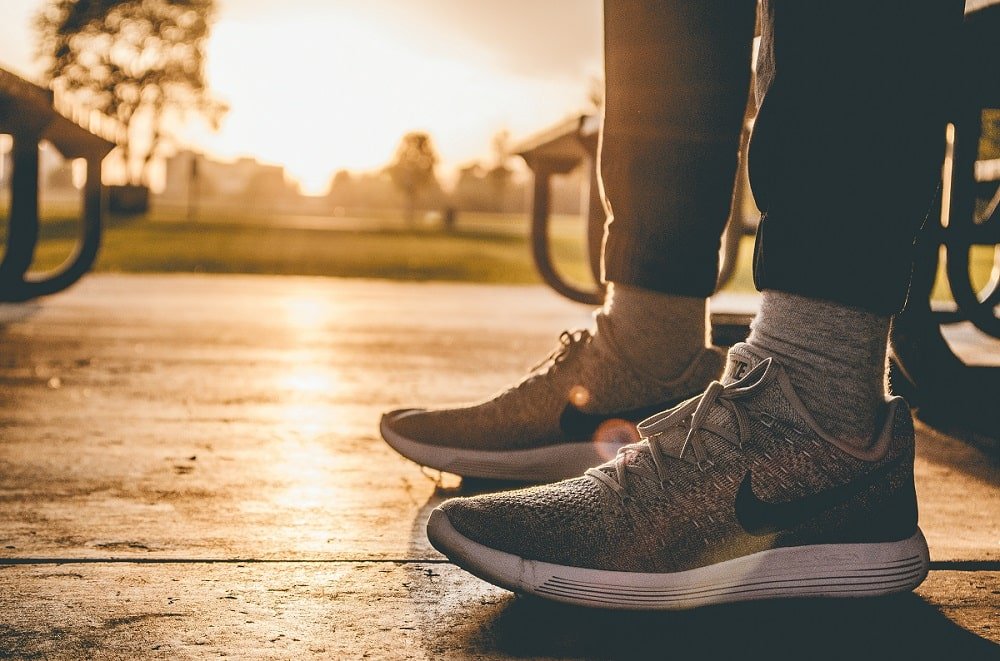
Soft and cushion-soled running shoes could make you feel running in the skies but unfortunately, those shoes can change the way your foot hits the ground. See the warning signs of wearing improper shoes.
Dr. Hyan Bae and other spine surgeons from Los Angeles have even noted that some cushioned running shoes end up forcing the impact to go towards the middle of the foot and the toes rather than the heel.
This actually causes a misalignment, which may eventually radiate to your lower back (Hyan). So despite going for fancy and cool-looking running shoes, select the one which matches your foot arch and is prescribed by the specialist or your sports physician.
See best running shoes for lower back pain. Also, See the best running shoes for degenerative disc disease.
Return To Activity After Pain:
Remember that,
- Do not resume running, jogging, or other training activities until you are able to walk generally at a quick pace again.
- Bounce back slowly into your training as your back begins to feel better. Do not immediately resume the same volume of training as before. Instead, ease your way back into it.
- Thoroughly warm up your body before you begin an activity and training (including press-ups, and bridging). Then take part in an activity-specific warm-up.
- Chose a core strengthening and lumbar strengthening program until you have resumed your athletic running (Ben Shatto, DPT, OCS, CSCS, 2017).
Ensure The Following Before Returning to Full Training
- There is now complete lumbar mobility.
- You no longer experience any sensations, weakness, or instability within the spine.
- In case you had leg pain, the involved leg is now as flexible as the other, and the pain is either gone or centralized (meaning you are not experiencing pain in the leg anymore).
- Both sides of your hips are equally mobile.
- Try jumping on one leg to see if you feel strong or if there is pain. You may not be ready to taper up to full training activities if the pain still exists
References
Ben Shatto, DPT, OCS, CSCS. (2017, November 16). When to Return to Activity after Experiencing Low Back Pain. Retrieved from THE PHYSICAL THERAPY ADVISOR:
Cleveland. (2021, January 18). Lower Back Pain. Retrieved from Cleveland Clinic:
Hyan, D. (n.d.). HOW YOUR RUNNING SHOES ARE AFFECTING YOUR BACK. Retrieved 2022, from The Spine Institute:
Jamaica Hospital Medical Center. (2019, February 01). How Obesity Contributes to Lower Back Problems. Retrieved 2022, from Jamaica Hospital Medical Center:
Johns Hopkins Medicine, 2020. (n.d.). Health, Conditions, and Diseases. Retrieved 2022, from Johns Hopkins Medicine:
Kopasakis, P. M. (2020, March 29). Why a Strong Core Can Help Reduce Low Back Pain, What are some exercises for the core that can help with back pain. Retrieved from Cleveland Clinic.
Lee N.Marinko, P. C. (2011). Posture. In P. K. Levangie, Joint Structure and Function, A Comprehensive Analysis, Fifth Edition (p. 588). F. A. Davis Company.
Mariano Kopasakis, DPT, SCS. (2020, May 29). Why a Strong Core Can Help Reduce Low Back Pain. Retrieved 2022, from Cleveland Clinic:
